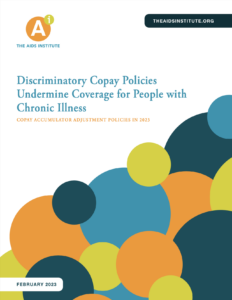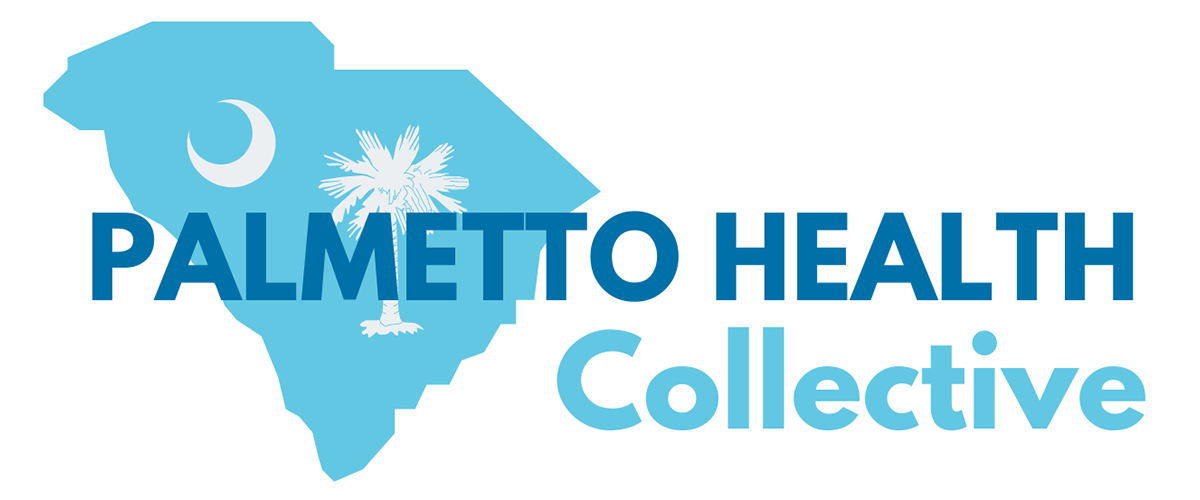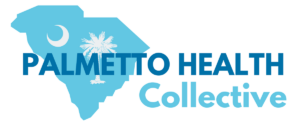COPAY ACCUMULATOR ADJUSTMENT POLICIES IN 2023
Introduction

Patients with rare, complex, or chronic diseases such as HIV and viral hepatitis often need high-cost medications to manage their conditions and maintain their health. For many of these medications, there is no generic or less expensive alternative. Over the past decade, insurance companies and pharmacy benefit managers (PBMs) have increasingly required patients with chronic illness to bear more of the cost of their care through higher deductibles and copayments (the amounts that people with health insurance have to pay when they get health care). For many people with chronic illness, these amounts have become too high to afford the medications they need, even when they have insurance.
As a result, many patients with such diseases – including those with health insurance – must rely on financial assistance from charitable foundations and drug manufacturers. These copay assistance programs play a crucial role helping patients who rely on expensive medications meet those cost-sharing obligations and afford the medication they need to treat their condition. These programs provide a true financial lifeline for many people living with chronic conditions.
However, insurance companies and PBMs are increasingly undermining this assistance by
not counting the amount of money covered by manufacturer copay assistance programs toward enrollees’ annual deductibles and out- of-pocket limit. Instead, they keep the copay assistance funds used, and make enrollees keep paying. This little-known practice is called a “copay accumulator adjustment policy” or “CAAP.” These policies contribute to insurance company and PBM profits while shifting the cost of expensive prescription drugs to the patients who most rely on them, and the policies have become more common in recent years.
Unfortunately, the federal government has allowed copay accumulator adjustment policies to flourish, despite outcries from patients struggling to afford the prescription drugs they need to
get and stay healthy. A rule finalized in the last year of the Trump administration allows health insurance companies and PBMs to use copay accumulator adjustment policies at their discretion, even where there is no medically appropriate generic drug available. Despite President Biden’s Executive Order directing the Department of Health and Human Services (HHS) to review policies that could pose barriers to health care, HHS has not yet reversed that decision.
Copay accumulator adjustment policies add extra costs for patients who have serious, complex, chronic illnesses, making it harder for these patients to afford the medicines they need, compounding the economic burden millions of Americans are experiencing as they struggle to afford basic necessities like rent, gas, and groceries. Unexpected costs due to copay accumulator adjustment programs only increase this financial strain and jeopardize vulnerable patients’ health. In an attempt to protect patients from this harm, 16 states now have laws that prevent the practice.
This report examines how widely insurance companies and PBMs have adopted these policies in the health insurance plans they offered to individuals and families in the health insurance marketplace for 2023. We found that use of these policies is widespread, undermining access to essential and life-saving medicines for patients with health insurance.
This report covers:
- Overview of Our Methodology
- Findings
- How Copay Assistance Works with Copay Accumulator Adjustment Policies
- Cost-sharing and Plan Design Pose Barriers to Health Care
- The Impact of Copay Accumulator Adjustment Policies on Patients
- Federal Regulation and Legislation Regarding Copay Accumulator Adjustment Policies
- State Actions to Protect Patients’ Access to Prescriptions
- Conclusion
Download PDF: CLICK HERE

